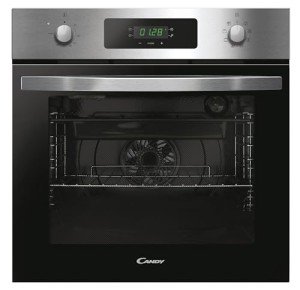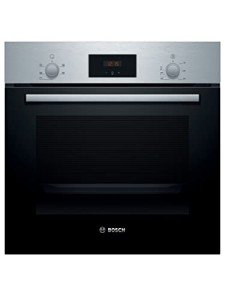
Single Electric Ovens
Add a review FollowOverview
-
Founded Date August 9, 2001
-
Sectors Aerospace Engineering
-
Posted Jobs 0
-
Viewed 16
Company Description
10 Quick Tips To Single Built In Oven
The Comprehensive Guide to Single Built-In Ovens: Features, Benefits, and FAQs
Intro
In modern-day kitchen areas, the combination of devices is essential to accomplishing a structured style. Amongst these devices, the built-in oven sticks out as a staple for daily cooking. In specific, single built-in ovens are getting appeal due to their space-saving style and performance. This post explores the functions, advantages, and typically asked concerns about single built-in ovens, helping property owners make informed choices.
What is a Single Built-In Oven?
A single built-in oven is a cooking home appliance developed to be embedded within kitchen cabinetry, providing a smooth look that matches the kitchen’s aesthetic. Unlike freestanding ovens, built-in variants offer a series of features and styles that accommodate modern culinary requirements.
Secret Features of a Single Built-In Oven
Single built-in ovens featured a variety of functions that boost performance and user experience. Here are a few of the most crucial characteristics:
| Feature | Description |
|---|---|
| Size and Capacity | Normally ranges from 24 to 30 inches in width; suitable for numerous kitchen sizes. |
| Cooking Modes | Multiple settings, consisting of convection, baking, broiling, and often steam cooking. |
| Controls | Digital touch controls or standard knobs with precise temperature settings. |
| Self-Cleaning Options | Many designs include self-cleaning functions for easier upkeep. |
| Energy Efficiency | Designed to consume less energy, often with an A+ energy rating. |
| Security Features | Includes child locks, cooling systems, and temperature level sensing units. |
| Style Options | Readily available in various finishes (stainless-steel, black, etc) and styles (modern, traditional). |
Advantages of Using a Single Built-In Oven
The adoption of single built-in ovens offers various advantages:

- Aesthetics: They create a modern-day and sleek appearance in the kitchen, blending perfectly with cabinets.
- Space-Saving: Ideal for smaller kitchen areas, they are designed to enhance space by being built into walls or cabinets.
- Increased Functionality: Many designs include advanced cooking innovation such as smart functions that allow remote control through mobile phone.
- Easy to Use: With user-friendly controls, built-in ovens are user-friendly and appropriate for both novice and experienced cooks.
- Improved Cooking Performance: Convection designs distribute hot air for even cooking results.
Popular Brands and Models
A number of brand names dominate the single built-in oven market, each offering unique features to accommodate customer choices. Here are some noteworthy ones:

| Brand | Popular Models | Secret Features |
|---|---|---|
| Bosch | HBN8451UC, HBL8453UC | European style, convection heat, Wi-Fi connection. |
| Electrolux | E30SO75GPS, E30SO75PPS | Variations in size, advanced grilling capabilities. |
| Samsung | NV51K6650SG | Dual convection, smart innovation, flexible cooking modes. |
| Whirlpool | WOS51EC0HS | Economical, trusted, self-cleaning features. |
| LG | LWS3063ST | Smart technology, air fry mode, streamlined aesthetic appeals. |
Setup Considerations
Setting up a single built-in oven includes particular considerations:
- Measurement: Ensure that the space allocated works with the oven’s dimensions.
- Ventilation: Adequate air flow needs to be kept for safety and effectiveness.
- Electrical Needs: Check voltage requirements and make sure appropriate electric outlets are offered.
- Expert Installation: While some property owners might select DIY, working with a professional can mitigate setup concerns.
Regularly Asked Questions (FAQs)
-
How much area is needed for a built-in oven?
- A built-in oven generally needs a designated space that differs by model, typically from 24 to 30 inches in width. Always refer to the producer’s specifications for accurate dimensions.
-
Can I set up a built-in oven by myself?
- While some might try a DIY setup, it is frequently suggested to work with a professional to guarantee appropriate fitting, electrical connections, and ventilation.
-
Are Best Single Ovens UK built-in ovens more pricey than freestanding models?
- Generally, yes. Single built-in ovens tend to cost more due to their design, installation, and additional features.
-
What are the differences in between convection and routine ovens?
- Convection ovens have a fan that flows hot air throughout, leading to even cooking. Conventional ovens depend on convected heat, which might lead to hot areas and unequal cooking.
-
What upkeep is needed for a built-in oven?
- Regular cleaning, ensuring vents remain unobstructed, and keeping track of functions. Many models use self-cleaning choices, which streamline maintenance.
Single built-in ovens represent a convergence of design, convenience, and performance in modern kitchens. With a variety of features and models readily available, these ovens cater to various cooking requirements and preferences. Whether you are an ambitious chef or an occasional home cook, acquiring a well-suited single built-in oven can enhance your cooking experience while raising your kitchen’s visual. Careful factor to consider of features, setup requirements, and maintenance will result in a rewarding investment in this essential kitchen home appliance.
